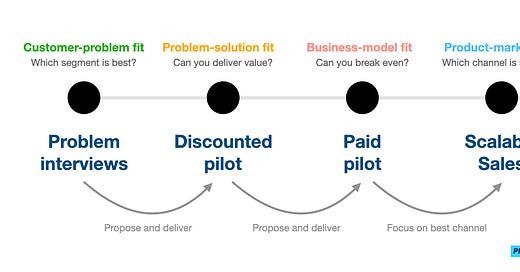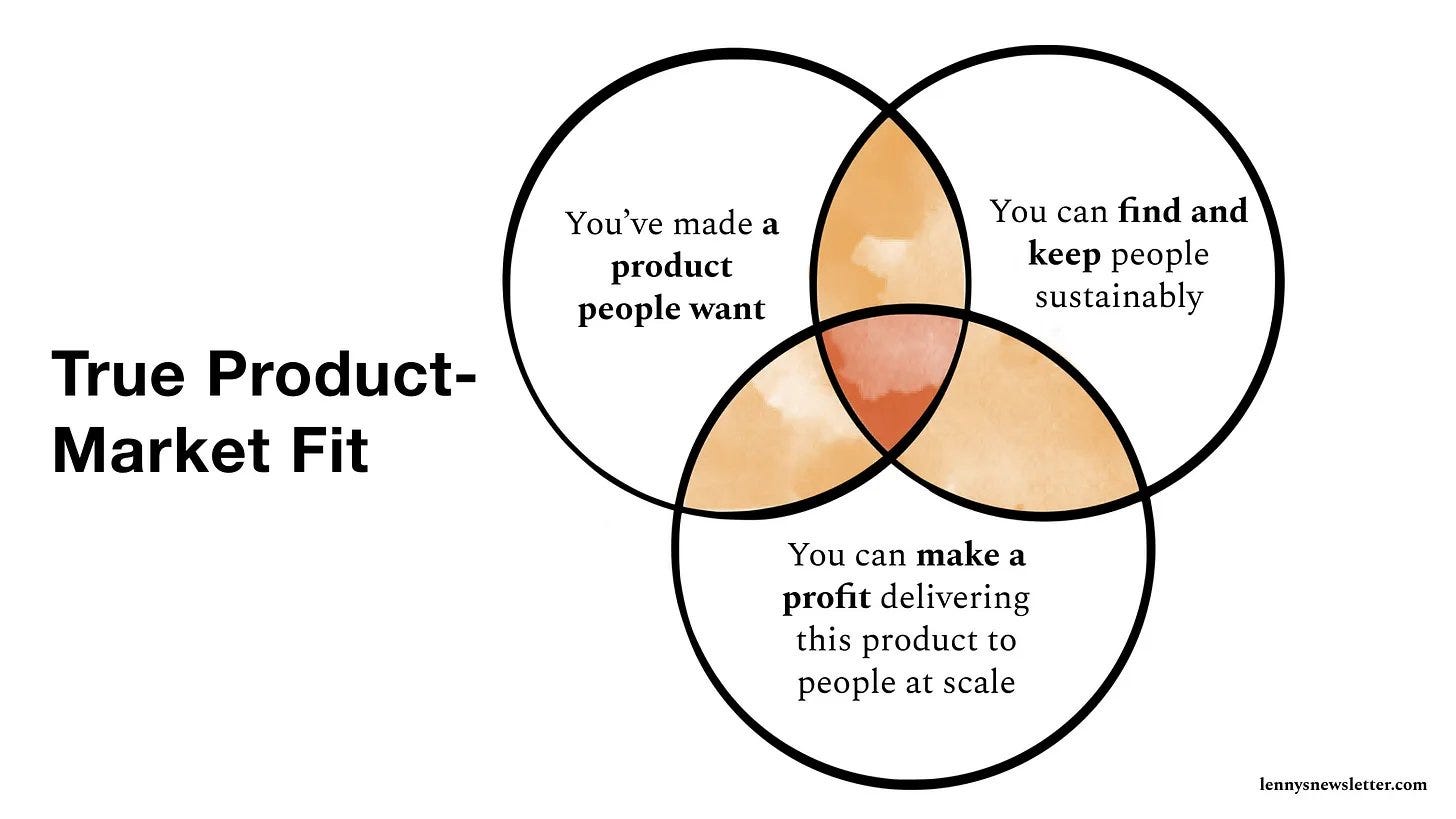It’s out! After working with an additional 100 startups, totalling 300+ now, I’ve updated my playbook to product-market fit. I removed noise and added detail based on spots where founders really struggle. Happy reading, curious to hear if it resonates.
What is PM-fit?
First, let’s define what we are aiming to achieve. I love Lenny’s definition of PMF:
A highly desirable product, for which you can find and keep customers sustainably, while making a profit delivering the product at scale.
I unpack Lenny’s definition as such:
First, find a urgent problem so your solution is higlhy desirable (cp-fit & ps-fit)
Next, make sure you can charge enough money to be profitable (bm-fit)
Lastly, make sure you can acquire customers at scale (pm-fit)






